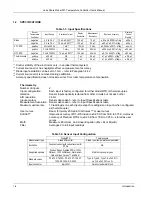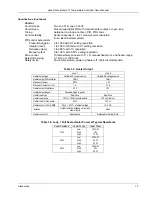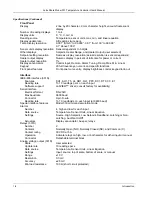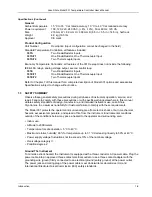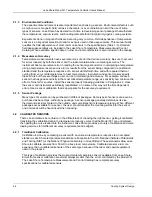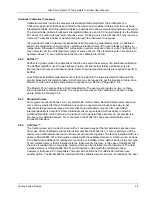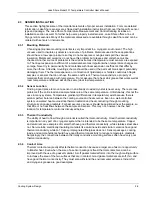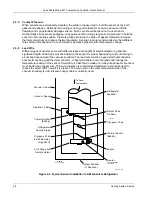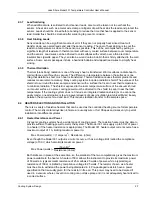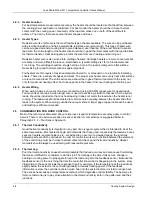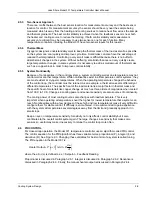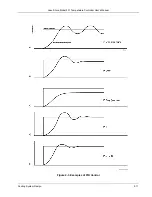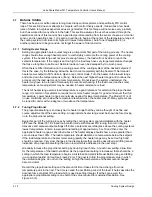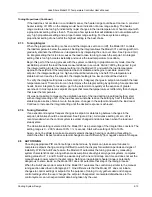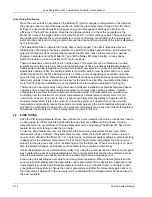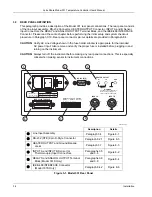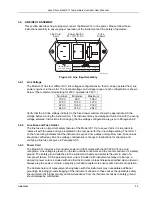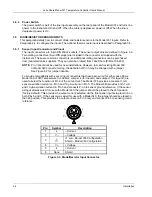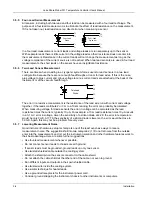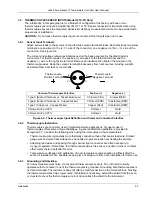
Lake Shore Model 331 Temperature Controller User’s Manual
2.6.1 Proportional
(P)
The Proportional term, also called gain, must have a value greater than zero for the control loop to
operate. The value of the proportional term is multiplied by the error (e) which is defined as the
difference between the setpoint and feedback temperatures, to generate the proportional contribution
to the output: Output (P) = Pe. If proportional is acting alone, with no integral, there must always be
an error or the output will go to zero. A great deal must be known about the load, sensor, and
controller to compute a proportional setting (P). Most often, the proportional setting is determined by
trial and error. The proportional setting is part of the overall control loop gain, and so are the heater
range and cooling power. The proportional setting will need to change if either of these change.
2.6.2 Integral
(I)
In the control loop, the integral term, also called reset, looks at error over time to build the integral
contribution to the output:
Output I
PI
e dt
a f
a f
=
z
.
By adding the integral to proportional contributions, the error that is necessary in a proportional only
system can be eliminated. When the error is at zero, controlling at the setpoint, the output is held
constant by the integral contribution. The integral setting (I) is more predictable than the gain setting.
It is related to the dominant time constant of the load. As discussed in Paragraph 2.7.3, measuring
this time constant allows a reasonable calculation of the integral setting. In the Model 331, the integral
term is not set in seconds like some other systems. The integral setting can be derived by dividing
1000 by the integral seconds: I
setting
= 1000
/
I
seconds
.
2.6.3 Derivative
(D)
The derivative term, also called rate, acts on the change in error with time to make its contribution to
the output:
Output D
PD
de
dt
( )
=
.
By reacting to a fast changing error signal the derivative can work to boost the output when the
setpoint changes quickly, reducing the time it takes for temperature to reach the setpoint. It can also
see the error decreasing rapidly when the temperature nears the setpoint and reduce the output for
less overshoot. The derivative term can be useful in fast changing systems but it is often turned off
during steady state control because it reacts too strongly to small disturbances. The derivative setting
(D) is related to the dominant time constant of the load similar to the I
setting
and is therefore set
proportional to I
setting
when used.
2.6.4
Manual Heater Power (MHP) Output
The Model 331 has a control setting that is not a normal part of a PID control loop. Manual Heater
Power (MHP) output can be used for open loop control, meaning feedback is ignored and the heater
output stays at the users manual setting. This is a good way to put constant heating power into a load
when needed. The MHP output term can also be added to the PID output. Some users prefer to set a
power near that necessary to control at a setpoint and let the closed loop make up the small
difference. MHP output is set in percent of full scale current or power for a given heater range.
NOTE:
MHP output should be set to 0% when not in use.
2-10
Cooling System Design

